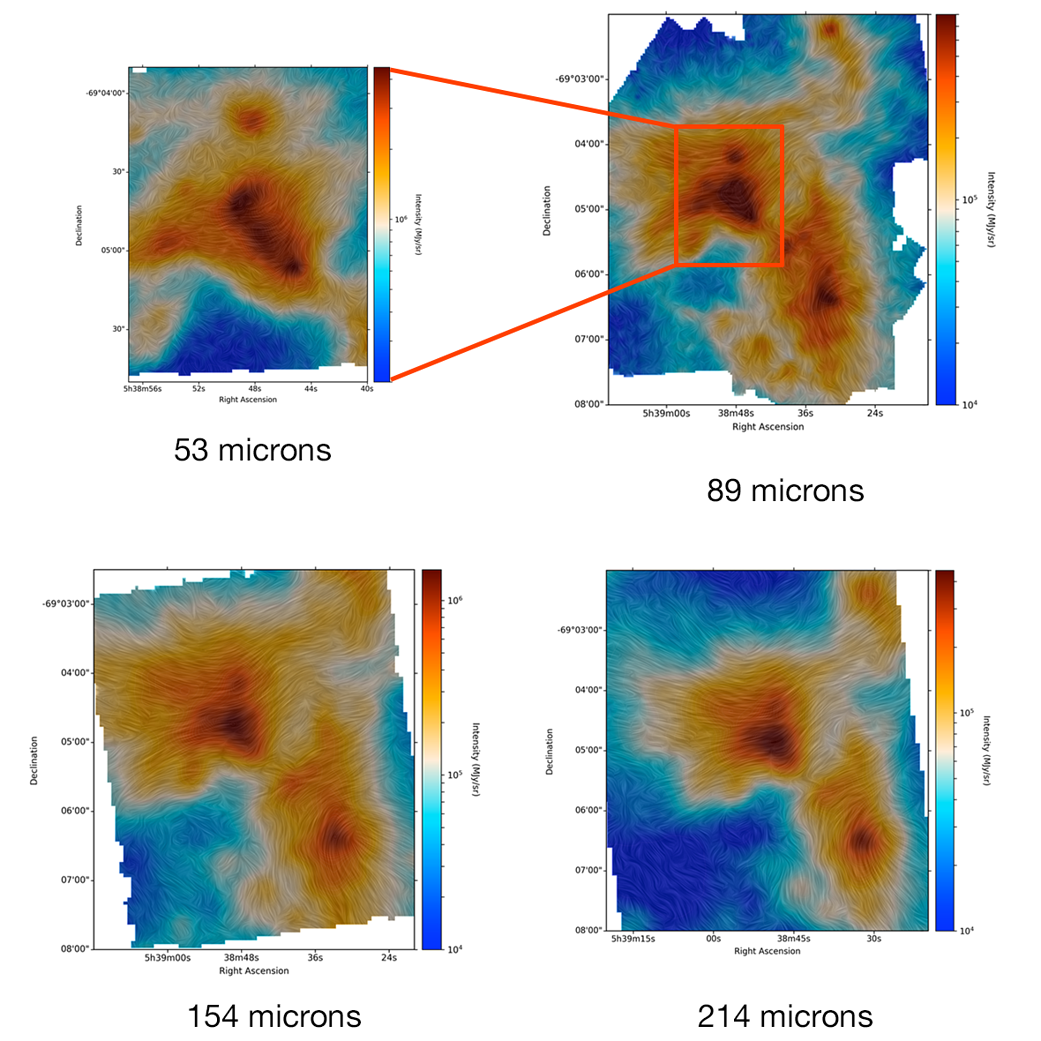These images show the infrared radiation emitted by the dust and the magnetic fields in 30 Dor, which is a star-forming region within the Tarantula Nebula located in the satellite galaxy called the Large Magellanic Cloud. Observations have shown that 30 Dor is one of the best and closest laboratories to study the starburst phenomenon — in which large numbers of massive stars and stellar clusters are formed rapidly in a small volume. But the effect magnetic fields have on these processes is not well understood.
Using the observatory’s newest instrument, which has a device called a polarimeter that maps celestial magnetic fields, the SOFIA team observed 30 Dor in a range of wavelengths sensitive to dust temperatures between 10-100 Kelvin (-441 to -280 F). The images taken at the shorter wavelengths reveal warmer dust, while the images taken at the longer wavelengths show cooler dust. These can be used to study potential disturbances on the magnetic fields in the dense and compact regions of 30 Dor, as well as the large-scale magnetic fields governing the whole structure of the nebula — both of which may impact star formation.
“SOFIA’s pioneering observing techniques let us gather this exciting data,” said Kimberly Ennico Smith, SOFIA project scientist. “We’re thrilled to offer it to the scientific community so soon after the observations were completed.”
The data are available: https://go.nasa.gov/2KVPPba
SOFIA is a Boeing 747SP jetliner modified to carry a 106-inch diameter telescope. It is a joint project of NASA and the German Aerospace Center, DLR. NASA’s Ames Research Center in California’s Silicon Valley manages the SOFIA program, science and mission operations in cooperation with the Universities Space Research Association headquartered in Columbia, Maryland, and the German SOFIA Institute (DSI) at the University of Stuttgart. The aircraft is operated and maintained from NASA’s Armstrong Flight Research Center Hangar 703, in Palmdale, California.






























